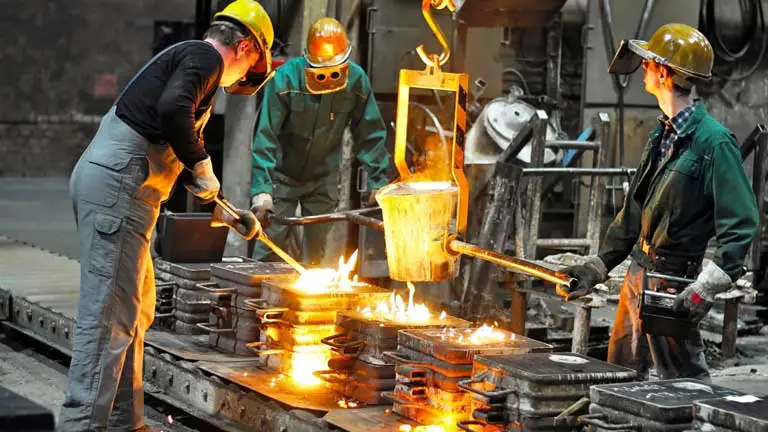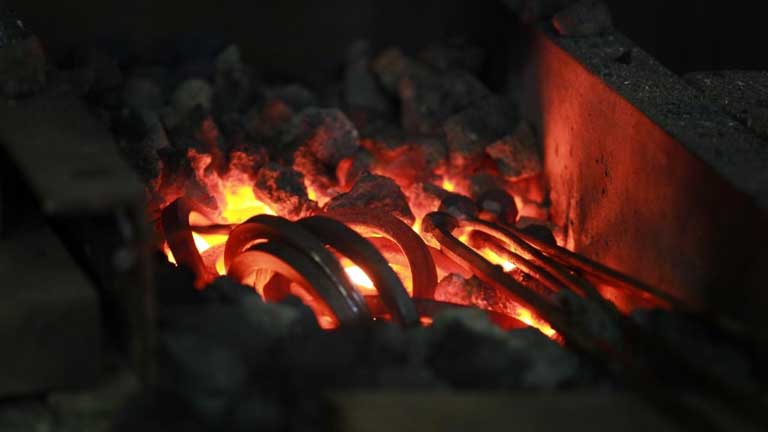Finding differences between two things that seem similar in many ways yet are miles apart, can mislead you sometimes.
Forge and foundry come among those. You might have heard these terms and probably thought they were interchangeable. And if you have failed to see the difference, then don’t worry! This article will give you a thorough explanation of the differences between foundry and forge.
So without further discussion let’s move towards the first difference.
Basics
Foundry is known for casting metal objects. Casting is a process in which liquid metal is poured into a mold to get the desired shape—the liquid, when cooled, becomes solidified and is cleaned to obtain a casting.
Forge is the kingdom of blacksmiths. Forging involves striking or pressurizing the metal into the desired shape. For purpose of your knowledge, forge as a term is used in two different contexts concerning the metal industry.
Forge as a forging workshop, is a place where a blacksmith creates his masterpieces. Forge is also the hearth used by the blacksmith, where the craftsman uses coal to heat metal or iron for forging.

Cast Iron vs Wrought Iron
You may wonder, why these two types of iron are mentioned here. Don’t sweat it. It is one of the basic differences between the two giants of the metal industry. Cast iron is used in a foundry while wrought iron is used in a forge. The reason is simple, yet disregarded.
Cast Iron can be melted at high temperatures. This melting is because of the high carbon ratio (2%) in the cast iron. It can be used in molds to create or design various shapes and sizes.
On the other hand, wrought iron is stubborn in melting because of its high melting point. It needs welding, heating, pressurizing, and a strong beating to get into shape. Moreover, it has a low carbon ratio of 0.8%.
Equipment
The actual distinguishing factor between the two workplaces is their equipment. The difference is of night and day. The foundry is equipped with heavier items as compared to a forge. However, you need to know about the major equipment that matters.
A foundry is an abode to various types of furnaces. The furnaces are equipped according to the purpose they serve.
1. Cupola Furnaces
The cupola is a vertical cylindrical furnace. It has a height of 6 meters. Cupola melts the metal, just like a boiling cauldron of broth. The furnace then fills the molds for casting the metal objects. It is used for the manufacturing of almost all iron alloys but mainly lead is used.
2. Blast Furnace
A blast furnace as an installation is destined to produce large quantities of pig iron. The furnace’s annual capacity is 20 million tons. It has a tubular structure with an approximate height of 30 m. The tube which is the oven itself is equipped with hot air stoves, an exhaust gas treatment system, and the loading-unloading system.
3. Submerged Electric Arc Furnace
As the name indicates it requires electricity to operate. Its electric consumption is several megawatts that is why these furnaces are normally equipped with their generation plants.
The furnace is the king of the foundry, but a forge is “democratic” in nature. The blacksmith’s workshop consists of various tools, but the major tools are mentioned that you must recognize when you visit a forge.
Many of you must have seen the television show “Forged in Fire”. If you have then you must know these tools, but if you haven’t then you are about to know them better.

4. Anvil
A professional blacksmith loves his anvil. He likes to tap it to make it sing, rest, think, take out his frustrations, and many more. It’s the anvil that helps him in beating the metal piece into shape.
5. Hammers
A forge is full of various types of hammers, sledgehammers, and mallets. Their purpose is simple, to beat the shape out of the metal piece.
6. Quenching Tank
The tank is filled with quenching oil. The oil strengthens the iron and brings out the cracks or warp in a workpiece if is faulty.
Products
To understand the casting, observe your surroundings. Anything made out of metal alloy with an intricate shape or cavities is a product of foundry. For purpose of understanding, consider the metallic spare parts of a car engine. The same car model would have the same spare parts with the same dimensions.
The spare parts may be large or small. They may have cavities, hollow cylinders, or pointy shapes because of the ways they are cast.
While forging involves a lot of manual labor. The products are not complex as far as the shape is concerned. The dimensions of a similar product may not be the same. In the modern era, a forging workshop creates swords, daggers, axes, etc. for decorative purposes.
Read: Top Safety Goggles to Use
Conclusion
Both foundry and forge have their own uses, despite the differences. Both crafts require the talents of highly skillful hands and minds. However, for someone not related to these crafts, it might be difficult to know the main differences.
Therefore, it is important to consider the above-mentioned details to distinguish the two setups. The best tribute you can give them, to recognize the differences and appreciate the products they produce have makes our life easy.
Leave a Reply